Planning RV adventures around Tombstone, Arizona? It’s the perfect adventure base for camping, biking, and hiking – as well as exploring historic sites. Read on!
Disclosure: This post contains affiliate links. If you buy something from one of our affiliates, we receive a small commission at no extra charge to you. Thanks for helping to keep our blog up and running!
Table of Contents
RV Adventures around Tombstone
What makes a great place for adventure?
Location, location, location. While you can visit the Tombstone area in a long day from Tucson, Arizona, you’ll want to stay closer to take advantage of the multitude of adventures in the area.
Finding a great RV adventure base in our books means finding the location that offers camping and outdoor activities such as biking and hiking as well as historic sites to explore.
Lucky strike because Tombstone offers it all!
Historic Tombstone
The discovery of a large silver ore vein in southeastern Arizona Territory in 1877 brought to life a boomtown. As word spread, prospectors trickled in. More claims were filed. The trickle became a flood. Between 1879 and 1880, population surged from a handful of prospectors to over 5,000 residents in the infamous town of Tombstone.
With rapid growth came plays for control and power. Wealthy mine owners and businessmen began butting heads with prominent ranchers in the area. Marshall Virgil Earp and his brothers – on the side of the Tombstone businessmen – were pitted against the cowboys and Cochise County Sherrif Johnny Behan on the side of the Clanton and McLaury ranching families.
It erupted in violence on October 26, 1881. And the rest – as they say – is history.
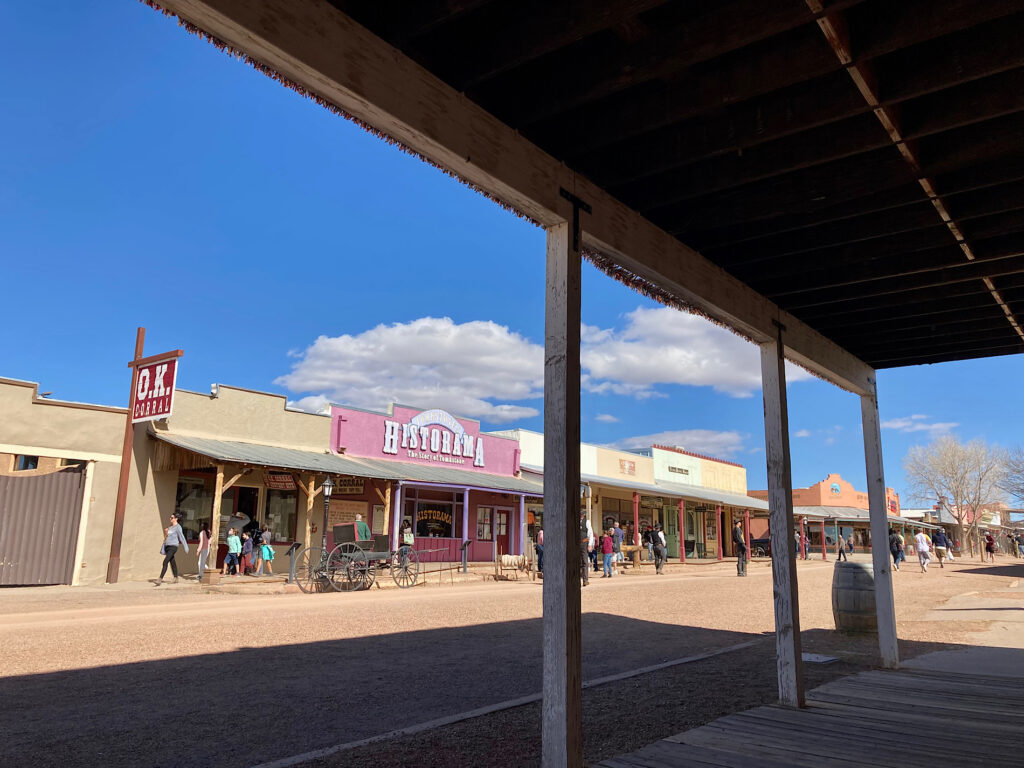
Well… not quite.
The town’s notoriety endured even as Tombstone continued to prosper. It had five local newspapers, at least two theaters, a courthouse, hotels, countless saloons, and all the trappings associated with wealth.
Tombstone was a modern, sophisticated Victorian city with every luxury and modern convenience available in the 1880s. People firmly believed that Tombstone was going to become the next San Francisco.
However, fortunes rise, and fortunes fall. Fires ravaged the town on several occasions. The mines flooded and by 1890 were no longer viable. The silver boom was over. Buildings were abandoned.
What’s in a Name?
Countless magazine articles, book, films have been dedicated to immortalizing Tombstone – a place synonymous with the American Old West. Anyone with a passing interest has heard of Tombstone, the shootout at the O.K. Corral, the Earp brothers and even Doc Holliday.
But mention the name Ed Schieffelin and most will scratch their heads in puzzlement.
“Nope, never heard of him.”
In 1877, Ed Schieffelin came to the Arizona territory to search for silver. He used the army’s Camp Huachuca (in today’s Sierra Vista) as a base. Every day he went out looking for rocks.
There were many dangers, not the least of which was the threat of attack from the Chiricahua Apache. The soldiers thought he was crazy to head out to Apache territory. They told him that “the only rock you’ll find will be your tombstone.”
Ed Schieffelin eventually found a vein of valuable silver ore – and with a sense of humour called his claim “The Tombstone.” Word of his discovery spread, and other miners quickly followed Ed’s footsteps. A town grew up around the mines.
It was called – you guessed it – Tombstone.
The Town too Tough to Die
Efforts were made to draw tourists into the Wild West. In 1929, an event called “Helldorado” helped reinvent Tombstone as a historic destination and the town – now dubbed “the town too tough to die” – hung on.
In 1949, the Tombstone Restoration Commission (TRC) – made up of private citizens committed to historic preservation, rehabilitation, and conservation – was established. Their work was key to the survival of many of Tombstone’s historic buildings – including the 1882 Tombstone Courthouse.
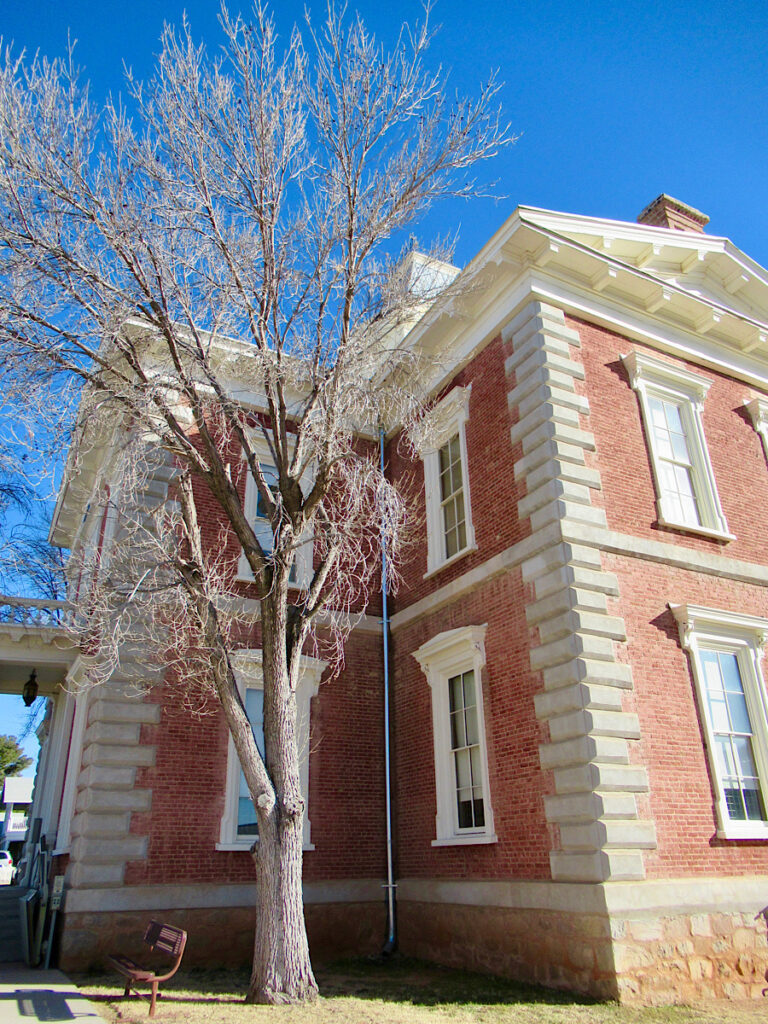
TRC President Mrs. Edna Landin brought the proposal of making the Tombstone Courthouse a State Park shortly after the legislation passed creating Arizona State Parks. Because of the work that had already been done, it was ready to open to the public.
Tombstone Courthouse State Historic Park was Arizona’s first operational State Park.

Plan your adventures with our 2026 RV Trip Planner available in our Etsy Printables Shop!
Things to Do in Tombstone, Arizona
RV adventures around Tombstone always start in town. Park the rig and take a walk on Allen Street – following in the footsteps of Wyatt Earp and Doc Holliday as you head for the Bird Cage Theatre. Step into the present and take a ghost tour of the haunted premises.
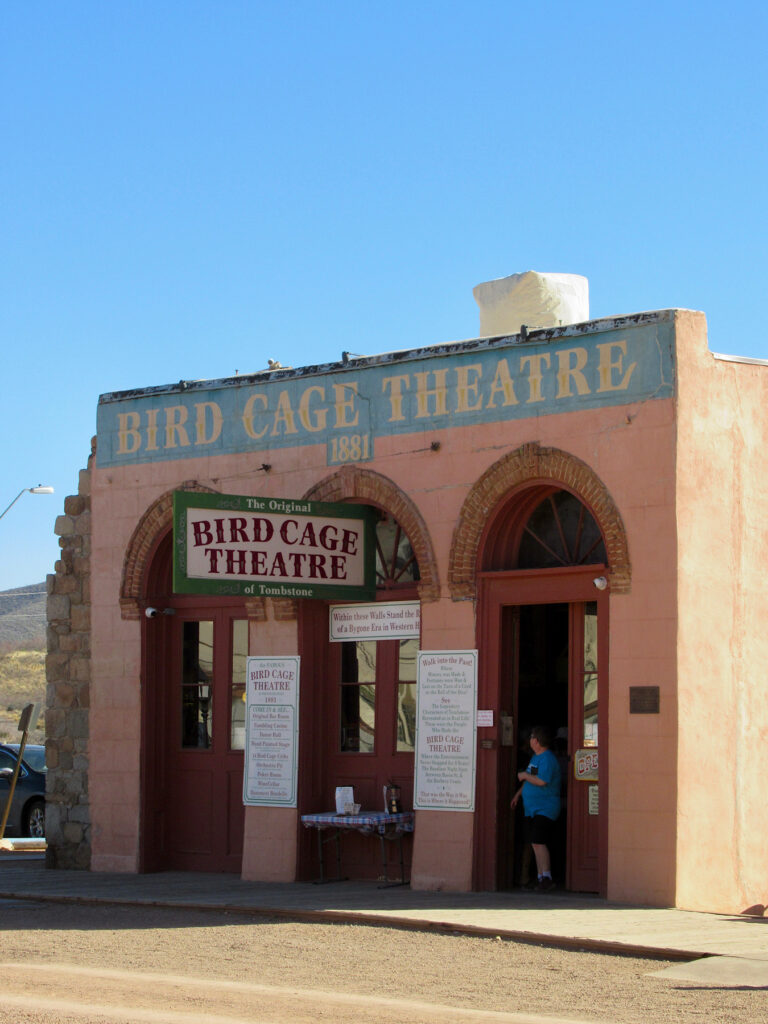
Hop aboard the Old Butterfield Stagecoach, stop in at the O.K. Corral & Historama, go deep on a Good Enough Mine tour, explore the exhibits at the Tombstone Courthouse State Historic Park, and wander Boothill Cemetery… where you’ll seriously be rolling your eyes at markers like: “Here Lies Lester Moore, Four Slugs from a 44, No Les, No More.”
It’s all good fun!
Off the Beaten Track in Tombstone
If you’re like us, you’ll want to see a little more of the back story behind the town.
Stop in at the Tombstone Visitor Centre and ask for a self-guided walking tour map before checking out the historic buildings and homes on and off Allen Street.
Spend an hour at the local library (on Toughnut Street east of the Courthouse Museum) reading historic books and magazines highlighting the town’s history.
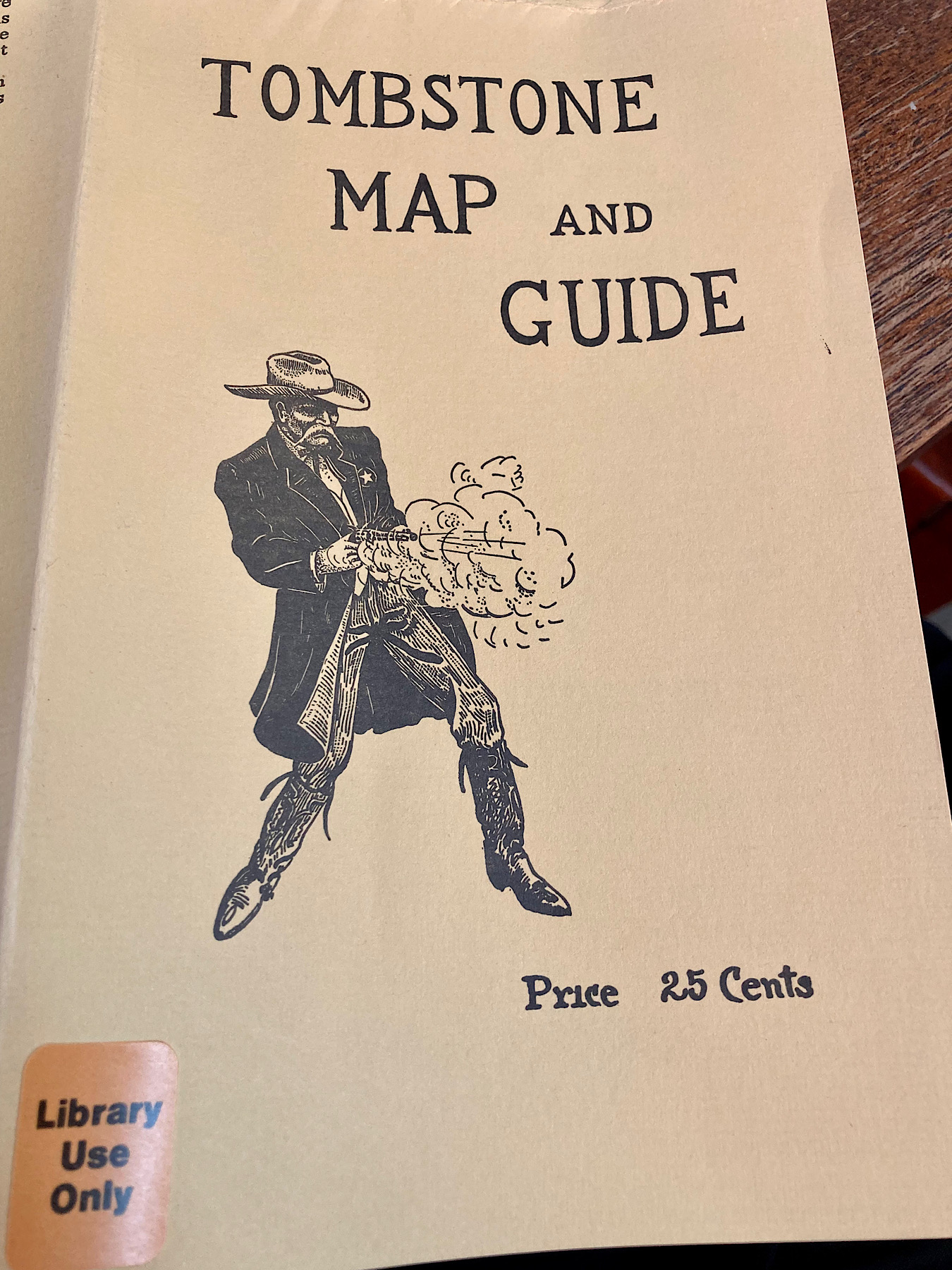
Last, but not least, head out of town to pay your respects to the man behind the town – Ed Schieffelin (1849-1898). He started prospecting in his late teens, sold his Tombstone area claims for hundreds of thousands of dollars in 1880 and continued prospecting across the West and even into Alaska, before he passed away in Oregon.
Ed Schieffelin had one last request: “It is my wish, if convenient, to be buried in the dress of a prospector, my old pick and canteen with me, on top of the granite hills about three miles westerly from the city of Tombstone, Arizona, and that a monument such as prospectors build when locating a mining claim be built over my grave… under no circumstances do I want to be buried in a graveyard or cemetery.“
If you drive west on Allen Street for approximately one mile (1.6 km), you will come to a fork in the road. Head right and follow it for another 1.5 miles (2.4 km) where you will find the massive granite rock cairn marking the final resting place of one of Tombstone’s many unsung heroes. Note that the road is narrow and rough – good for tow vehicles (or vehicles towed), but not suitable for large RVs.
Unsung Heroine Capturing Tombstone’s Past
The “Shootout at the O.K. Corral” and its infamous cast of characters is burned in the annals of history. Life at that time is also recorded in photographs, thanks in part to the work of Wild West photojournalist Camillus Sidney (C.S.) Fly. Although the gunfight happened right beside “his” studio, C. S. was unable to capture the event because cameras of that era required time to set up.
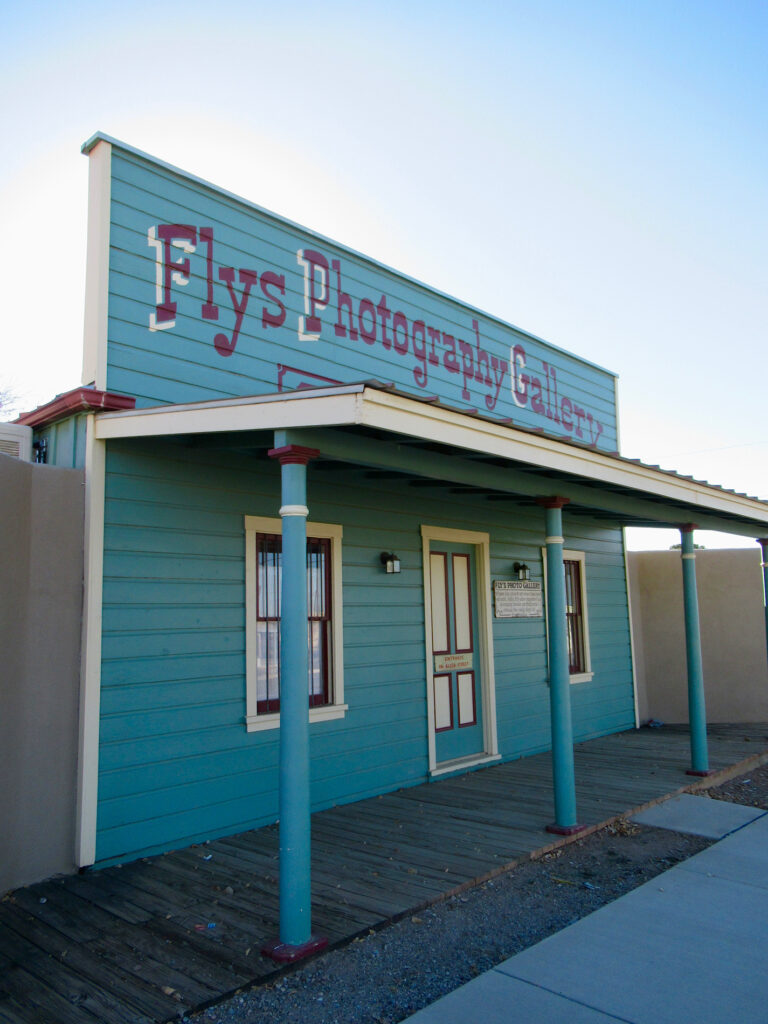
But not all the shooting was done by men in Tombstone!
What many people don’t know is that both C.S. and his wife Mollie were excellent photographers. While C.S. was out searching for western settings and characters to capture on film, Mollie was managing the business in town.
C. S. spent the remaining years of his life working on their ranch in the Chiricahua Mountains until his death in 1901. Some believe that Mollie was more technically accomplished in the darkroom than her husband. She even published several books of photos before her death in 1925.
More Active Adventures Around Tombstone
Explore the mining ghost towns of Charleston, Millville, or Fairbank. The first two require a bit of sleuthing to find while Fairbank offers reconstructed buildings and interpretive signage to help visitors understand a boomtown in 1882 with a population of close to 15,000 people.
Take a day trip to Bisbee, hike up Chihuahua Hill. FYI, Chihuahua Hill has two summits, one studded with crosses and shrines and good views of Old Bisbee: the other overlooking the massive copper mine scar. After working up a thirst, head back down to Brewery Gulch and Old Bisbee Brewing Company for a taste of their Copper City Ale – first made in Brewery Gulch in 1881 – and a yummy Spent Grain Pretzel!
Head underground at Kartchner Caverns on either the Rotunda/Throne Tour or the Big Room tour. Both are excellent. You’ll want to book ahead as the tours fill fast. There is the option of camping at Kartchner Caverns State Park if you want to spend more time wandering in the hills around the caves.
Hike Slavin Gulch (3.6 miles/5.8 km one-way) or Cochise Trail (4.5 miles/7.2 km one-way) in the Dragoon Mountains. The road is quite rough in a few places, but passable with a high clearance vehicle. Don’t plan on taking the RV… unless you have an off-road trailer and 4×4 or something similar.
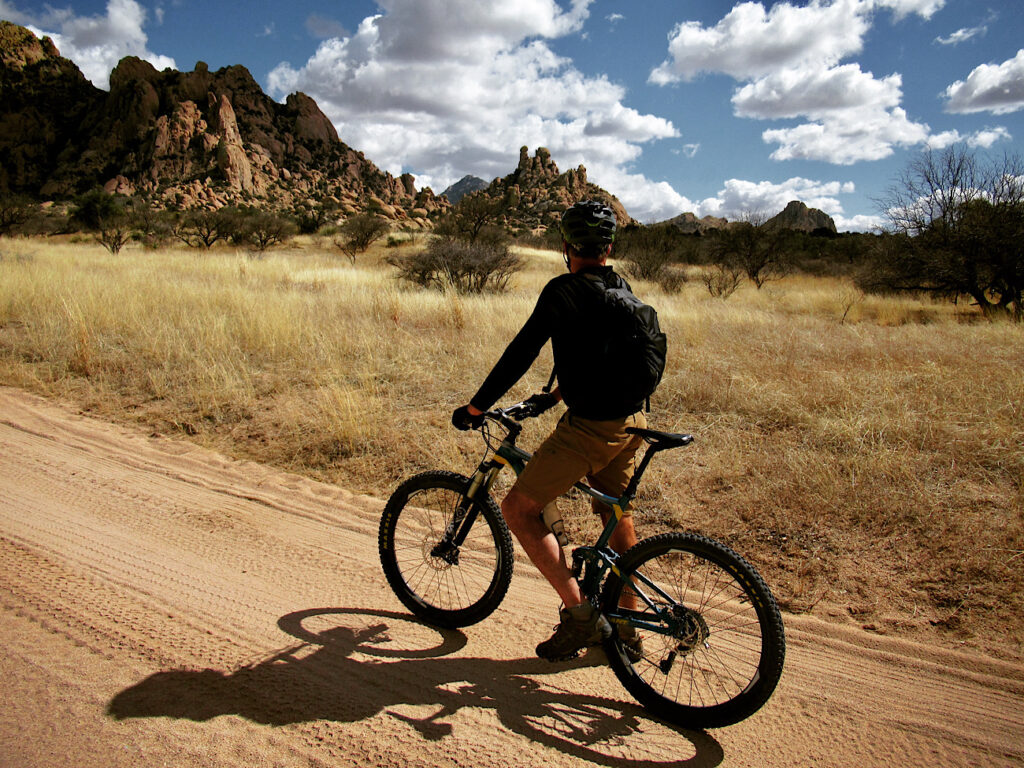
This road makes a great bike ride. Hop on your mountain bike to find Council Rocks pictographs. Hike or bike – we recommend it all! You might also want to investigate the dispersed camping options around the Dragoons.
Bonus adventure for Birders
If you’re visiting late winter, check out the Wilcox Playa and Whitewater Draw – about a 30-minute drive from Tombstone – for sandhill cranes. They overwinter by the thousands on the playa. Their flights are a sight to behold.
When You Visit Tombstone Area
We set up base in Tombstone RV Park – perfect RV adventure base. It’s a well-kept, reasonably-priced park close to – but away from – the hub of Tombstone’s tourist zone. Having the option for an electric heater on colder winter nights is a boon.
Pin this post for future reference!
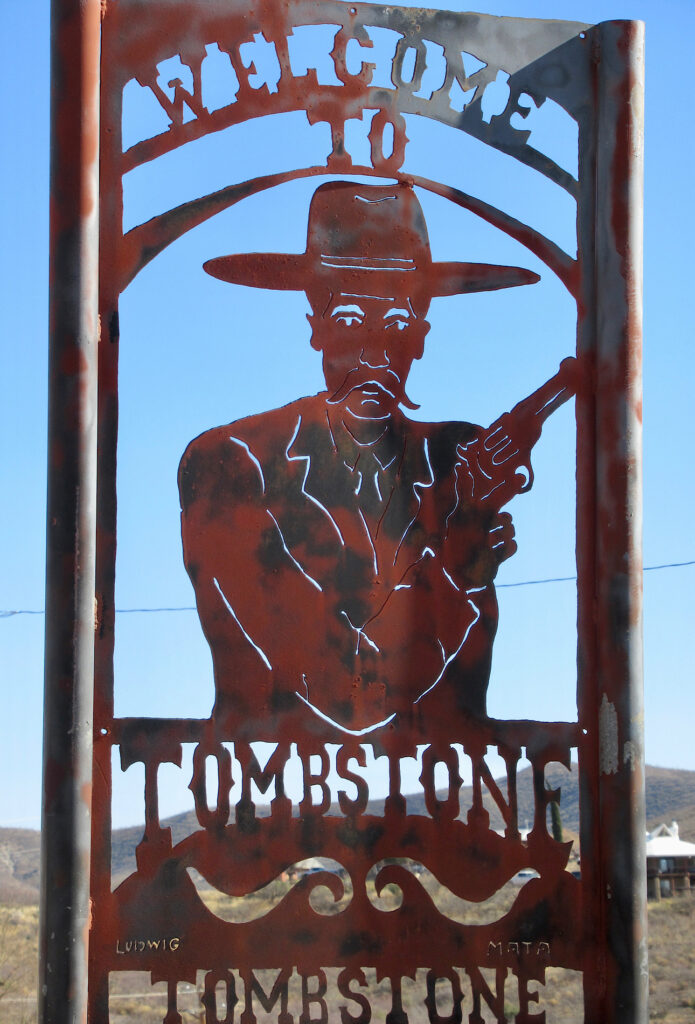

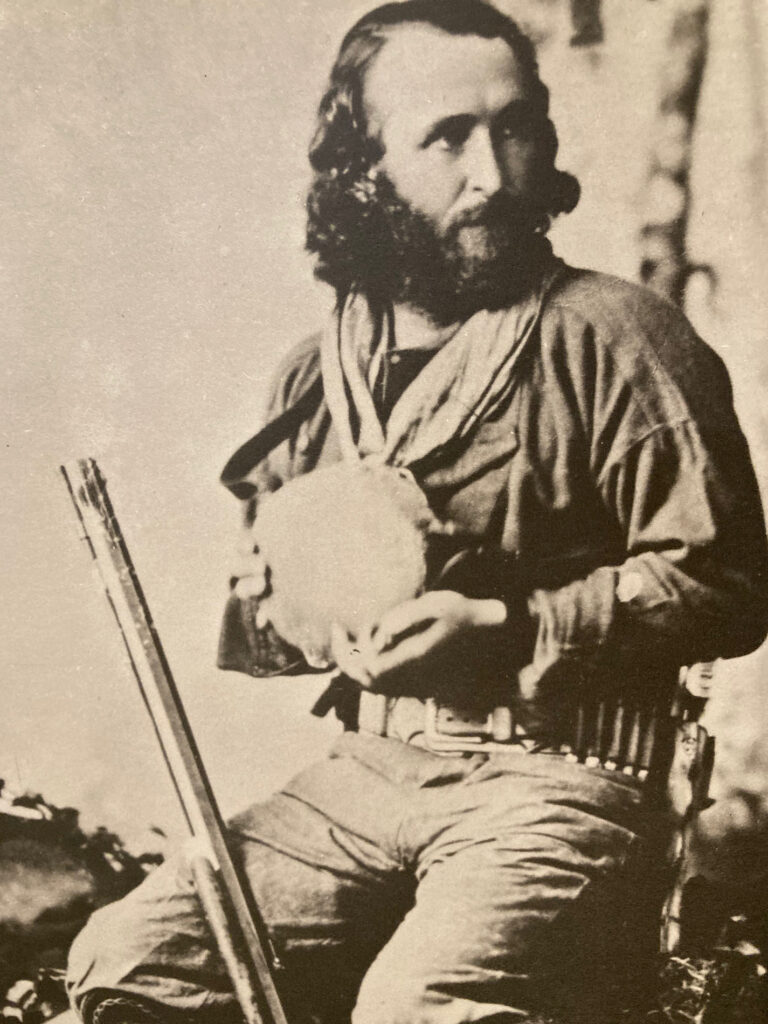
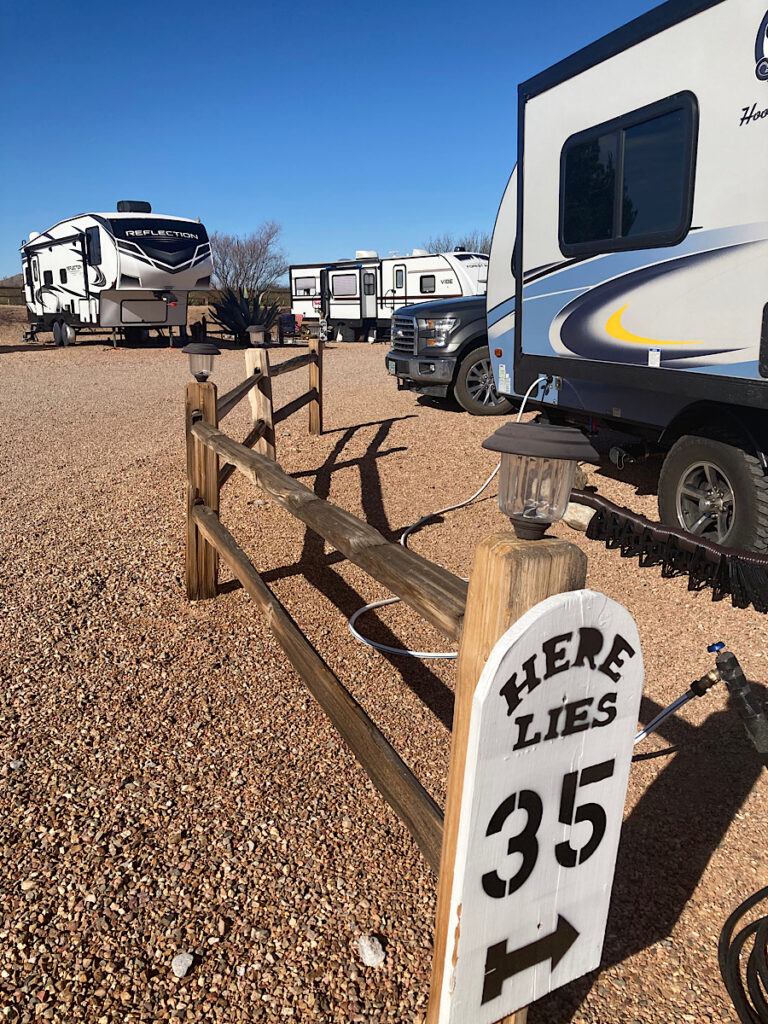
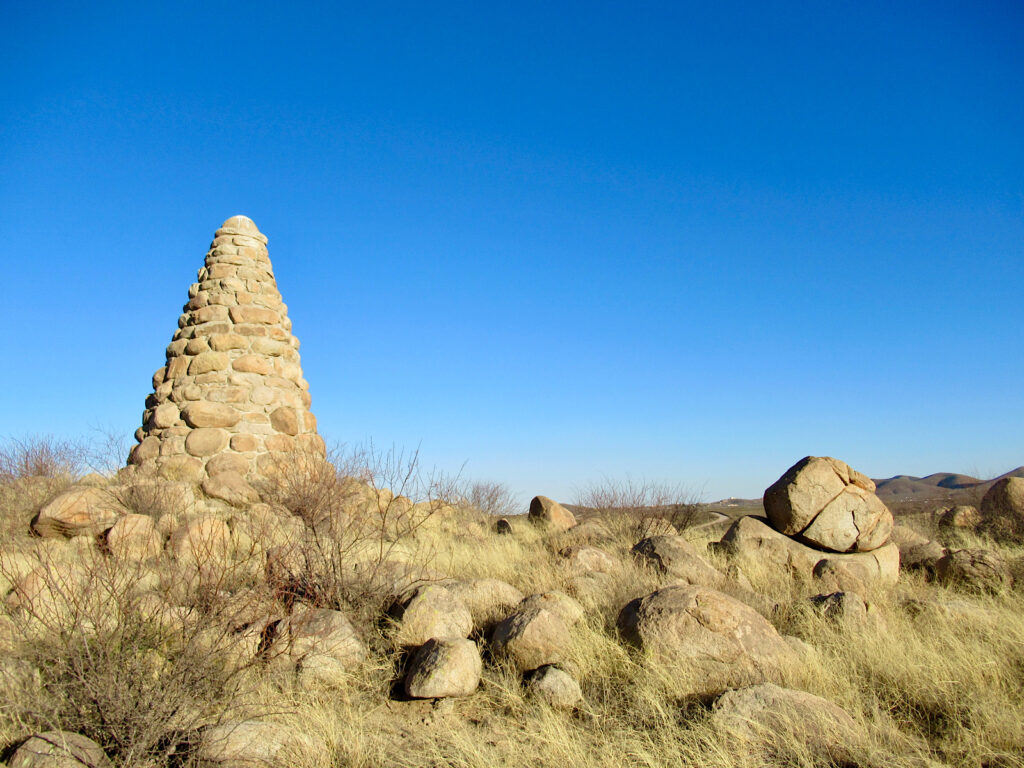


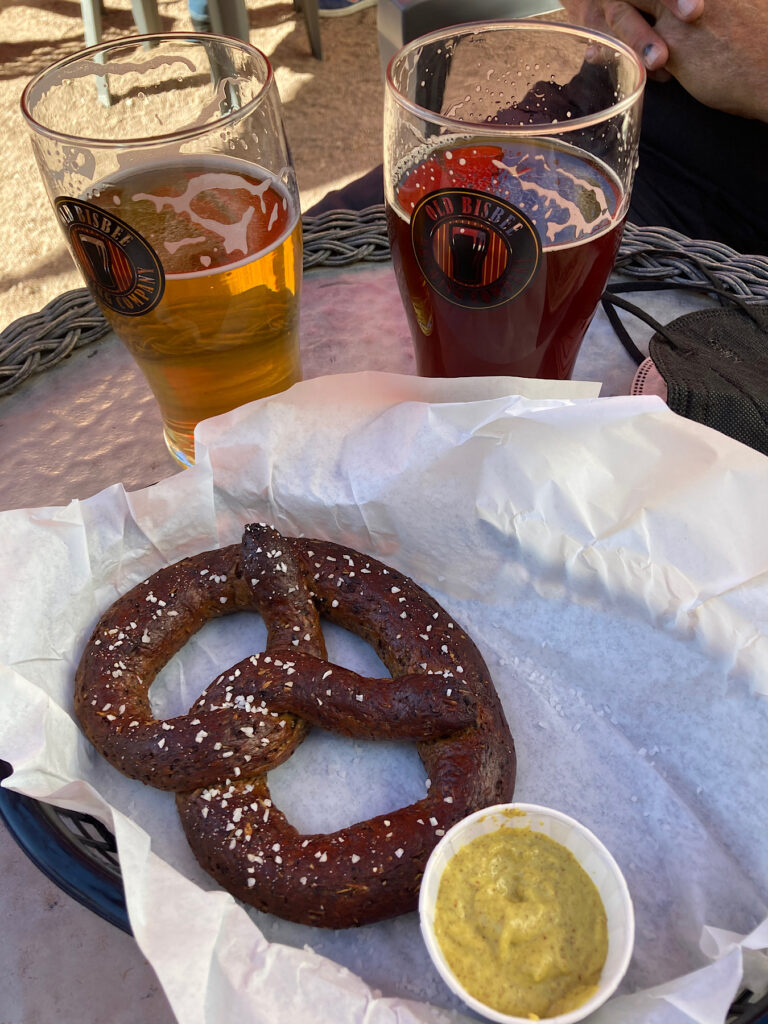

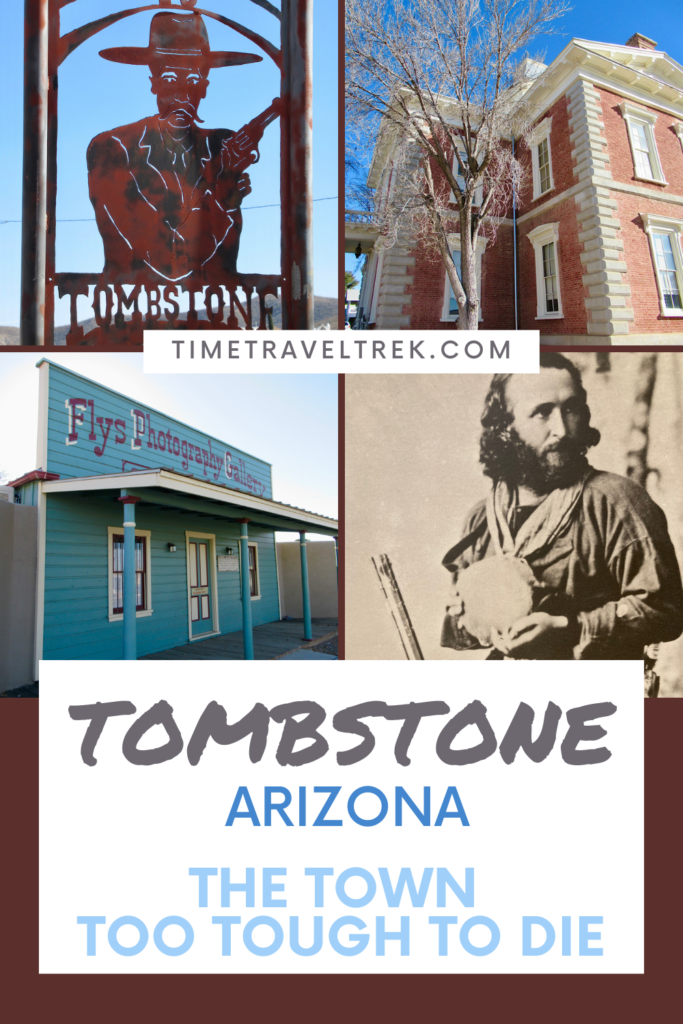
Leave a Reply